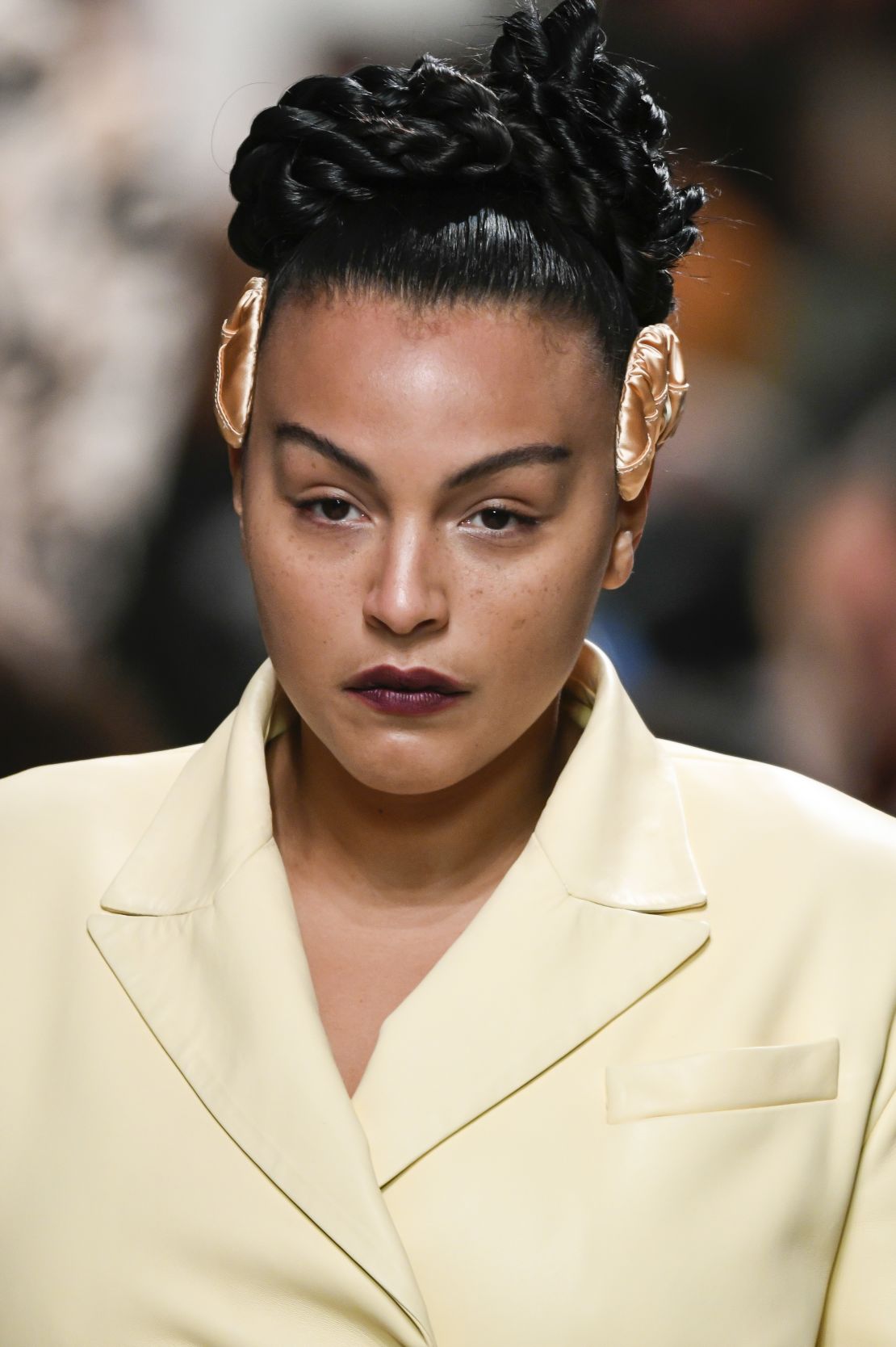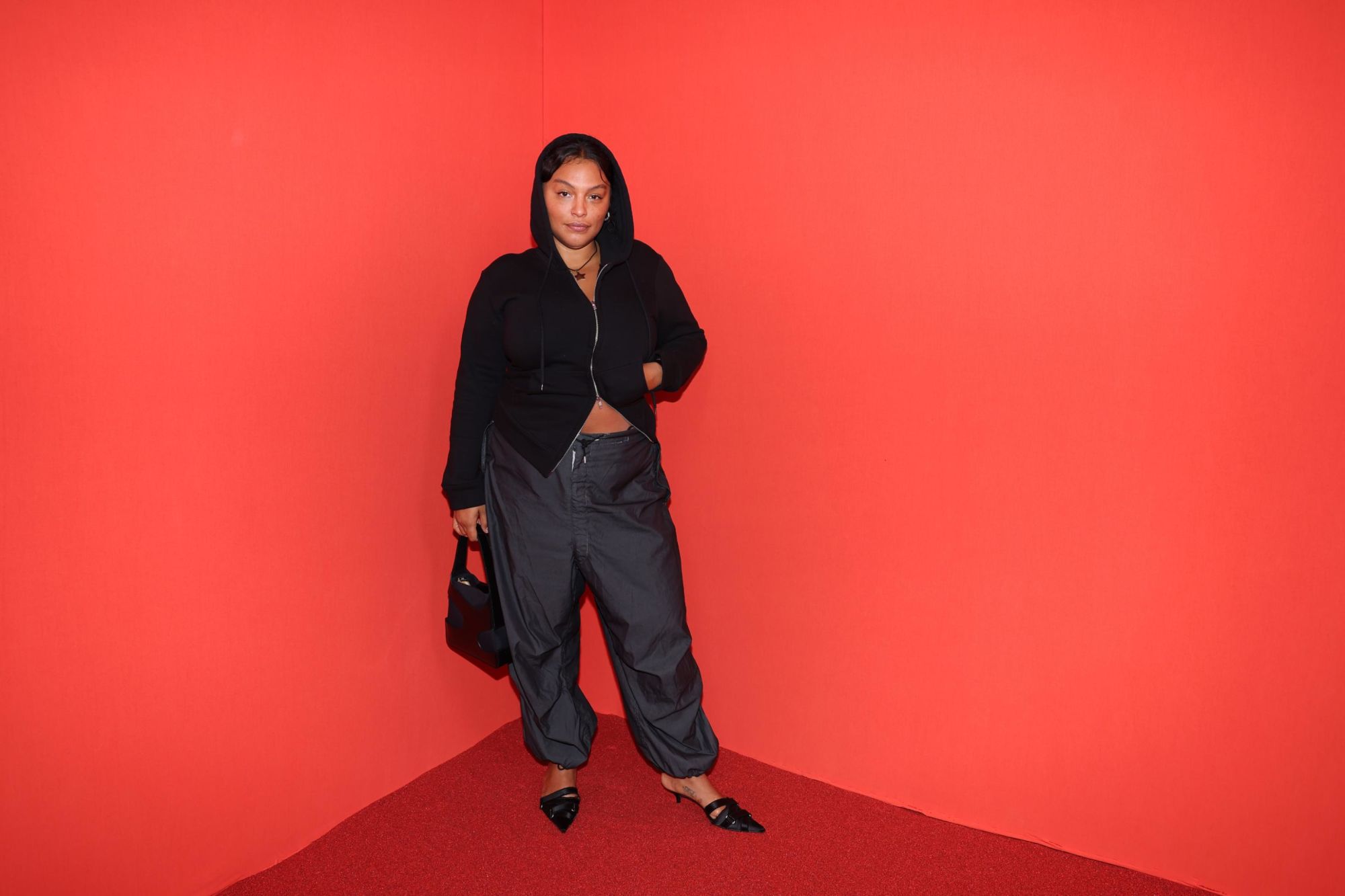Editor’s Note: This article was originally published by The Business of Fashion, an editorial partner of CNN Style.
“I’m shooting a Vogue cover as a chubby, short, mixed-race woman who never imagined this would be her reality,” says Paloma Elsesser of the “surreal” day that Annie Leibovitz photographed her for Vogue’s January 2021 issue. It was a victory and not just for Elsesser.
For years, you had to look a certain way to be on the cover of Vogue: White, tall and, above all, thin. When the magazine put beloved Black media mogul Oprah Winfrey on its October 1998 cover, editor-in-chief Anna Wintour reportedly suggested that Winfrey lose 20 pounds before the shoot.
And it wasn’t just Vogue. Elsesser, the curvy, London-born daughter of an African American mother and a Swiss Chilean father, won’t soon forget an incident in Paris that brought her to tears.
In 2015, Elsesser, then 22, was in town with make-up artist Pat McGrath, who had signed Elsesser to promote her first eyeshadow. One day, the model found herself backstage at Lanvin. A self-described tomboy in Supreme, she had never been to a Paris show before and her first-time excitement faded when she set eyes on the cast: most of them White, all of them thin. Elsseser is beautiful, with warm brown eyes and a radiant smile. But crushed by the weight of her otherness, she began to cry.
“I’m not supposed to be here. I don’t look like anyone here,” she recalls. “Who am I kidding? I’m not a f**king model.”

How things have changed. Today, Elsesser is one of fashion’s most sought-after muses. Now 30, she’s walked the runway for European luxury brands from Fendi to Chloé, including four Lanvin shows, and appeared in major advertising campaigns for Marc Jacobs, Coach and H&M. Even Victoria’s Secret, once infamous for its one-dimensional beauty standards, has hired Elsesser.
As society shifts and fashion emerges “from the dark ages” when larger models struggled for jobs and equal pay, demand for plus-size women is surging, says Next Models agent Becca Thorpe. So too are the rates they can command. “Clients are paying equal or above what they’re paying for traditional models to get access to (bigger models),” adds Cast Partner’s casting director, Treanna Lawrence.
Plus-size models — typically defined as above a size 4 in high fashion and above a size 12 in the mass market — are a lucrative business. “Once agencies saw there’s a real route to success for a girl like Paloma, they started signing more,” says stylist Carlos Nazario. “And when brands saw the engagement and attention they receive on the runway and in campaigns, they wanted a piece of the pie as well.”
But Elsesser’s rise wasn’t handed to her. If she has been the beneficiary of wider social currents, she has also been a catalyst, pushing forward and making space for others. “I think a lot of her modeling has been confronting the industry,” says DM Casting’s Samuel Ellis Scheinman.
The face of change
Elsesser arrived on the scene at a time of political turmoil. In the United States, a long-simmering culture war began to boil over after Donald Trump became president and George Floyd was killed by police, fueling Black Lives Matter. Wider calls were, simultaneously, being made for “body positivity,” a movement for greater acceptance of all bodies, regardless of size, shape, skin color, gender and ability.
As society shifted, so did fashion. In 2017, British Vogue hired the Black stylist and journalist Edward Enninful as its editor-in chief. In 2018, Louis Vuitton hired African American designer Virgil Abloh as artistic director of menswear. Fashion runways and magazines began featuring a wider cast of characters. “The industry in 2017, 2018, 2019 began offering a counter-proposal to the American political system at the time,” says Scheinman. “I think we started to understand that it has to be a radical message in the casting.” That this was good marketing didn’t hurt.

In 2016, though she had been hired to front the launch of Pat McGrath’s beauty venture, Elsesser still had trouble getting runway jobs for top fashion brands. Things began to pick up the following year after she walked for artsy labels like Eckhaus Latta. By 2018, she was cast alongside Bella and Gigi Hadid for the launch of Rihanna’s Fenty x Savage lingerie line. But it wasn’t until the spring of 2020 that she was hired by luxury brands like Alexander McQueen, Lanvin and Fendi.
That season was a watershed for plus-size casting. A week after Fendi featured plus-size models on the runway for the first time, Jill Kortleve became the first plus-size woman to walk for Chanel since Crystal Renn 10 years before. From late 2018 to early 2022, the number of brands casting plus-size models for their shows shot up 374%, according to data provided by Tagwalk, a company that tracks runway trends.
The shift was a boon for in-demand Elsesser, whose presence on the runway shot up more than 830% over the same period, said Tagwalk. In the last two seasons, she has walked more high fashion shows than any other plus-size model in the world.
From ‘hippie poor’ to top muse
Often top models are plucked from obscurity, their lives transformed overnight. Elsesser’s rise was “more organic,” says Scheinman. She came to modeling late, taking the plunge when she was 22 at the encouragement of her friend Stevie Dance, a former fashion editor at Pop magazine.
“The draw wasn’t, ‘I’m going to change the industry,”’ says Elsesser. At the time, she was working as a waitress and needed the money. “It was like, ‘Oh, my God, I can get paid $500 in one day — this is awesome.” She didn’t see many models who looked like her but reasoned: “If I don’t exist, maybe I should exist.”
Elsesser was born in London but raised in a “hippie poor” household in Los Angeles. Her mother once claimed government benefits for groceries but shopped at a local health food store. She valued intellectual curiosity, too, and as a child, Elsesser tagged along to West Hollywood’s Bodhi Tree bookstore. “I remember being in the 6th grade and I brought a stack of books to my mom; one of them was by Anaïs Nin, the erotic poet,” recalls Elsesser. “She was just like, ‘Yeah, add to cart.’”

Elsesser got a scholarship to an elite private school. But she says the most valuable thing she learned as a child was self-belief. One day after school, she complained to her mother about how “all the girls in class were White and skinny,” so her mother gave her “The Bluest Eye,” Toni Morrison’s seminal 1970 debut book about how White beauty standards distort Black women’s sense of self-worth. Elsesser was always bigger than her friends. “I was different but empowered in my difference,” she recalls.
After high school, Elsesser moved to New York. She studied psychology and literature at the New School but dropped out. Along the way, she befriended future fashion impresarios Angelo Baque and Raul Lopez. “It was like a weird cauldron of freaks all together, figuring it out,” she says.
Elsesser took to documenting her social milieu and streetwear-inflected personal style on Instagram, amassing a small but influential following. In 2014, she caught the eye of Pat McGrath, who made Elsesser the muse of Pat McGrath Labs’ Gold 001 eyeshadow. It launched Elsesser’s career.
More than a model
Elsesser is no typical model and not just for the way she looks. While most models are passive on set, conforming to the vision set by the rest of the creative team, Elsesser plays a more active role in her shoots, calling the photographers and stylists with whom she works “collaborators.”
For a provocative i-D cover featuring Elsessser in the skimpy Miu Miu crop top and mini skirt that was the most buzzy look of the Spring 2022 season, shot by Sam Rock and styled by Nazario, “I was brought into every part of the creative process,” says Elsesser.
That’s often out of necessity. Working with plus-size models can present challenges to creative teams more used to working with “straight-sized” models. To get Paloma into the Miu Miu mini, which the brand doesn’t make in her size, they had to cut the skirt in half and add a panel of fabric to extend its back to make it fit.
“We were being resourceful because we liked the skirt, and she wanted to wear it,” says Nazario. “Stuff like this doesn’t rattle her. She’s really game for learning with you and growing with you and sort of helping you through the process, guiding you through the process.”
Nazario says he’s careful to avoid plus-size cliches like “sexy curvy, tits out, waist cinch, clingy dress or naked… I think when we were making those i-D pictures, we really did so with the intent of seeing a larger body in a way that you hadn’t seen before in a fashion setting.” The cover went viral.
Last summer, Elsesser’s Uber driver asked what she did for a living. “I’m in sales,” she replied. She was joking, but she knows that fashion is a business and that her image is marketing. Sometimes that means being tokenized by brands and magazines eager to appear “inclusive” so as to appeal to younger consumers. “To normalize you first need to tokenize,” she reasons. “It has to start somewhere.”

Elsesser does not consider herself an activist, preferring the word advocate. “I advocate for issues around my body and identity. It’s something that always comes up because that’s my reality. I’m leaving pictures so maybe a girl hates herself a little bit less. Does that make me a f**king savior? No.”
Savior or not, she has made behind-the-scenes efforts to move the industry forward, pushing the labels she works with to look beyond marketing and actually sell the sizes she wears for them on the runway. “Paloma expects the designers she supports to produce and sell in her size if she is to lend her powerful image to their brand,” says fast-rising designer Nensi Dojaka, who, after working with Elsesser, is offering larger sizing for the first time.
But Elsesser has also suffered for being both visible and vocal. Online, trolls routinely mock her body and call her unhealthy. Nazario says he’s seen her endure “fatphobia” from industry insiders, as well.
“I think that it’s so generous of her,” he says. “She’s like a martyr the way that she gives of herself, and allows herself to sort of sometimes be a punching bag so that change can really be made. We are in the business of selling dreams and now it’s our turn to show what we think is beautiful.”
Paloma Elsesser has been a member of the BoF 500 since 2018. Explore the BoF 500 community here. Top image: Paloma Elsesser attending the Salvatore Ferragamo Spring-Summer 2023 show in Milan, italy.



